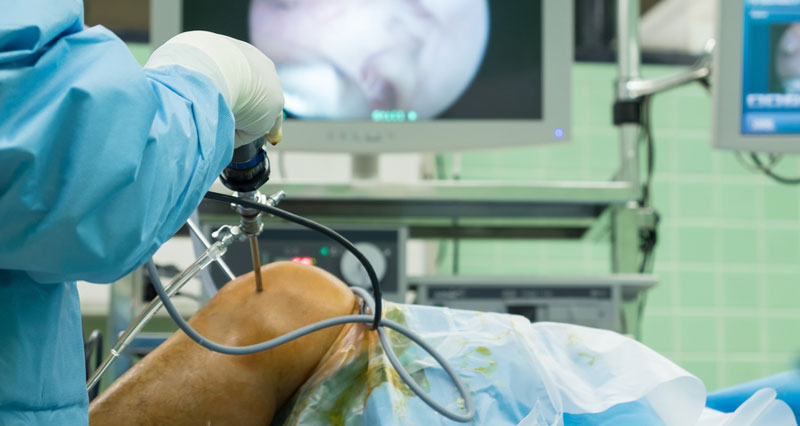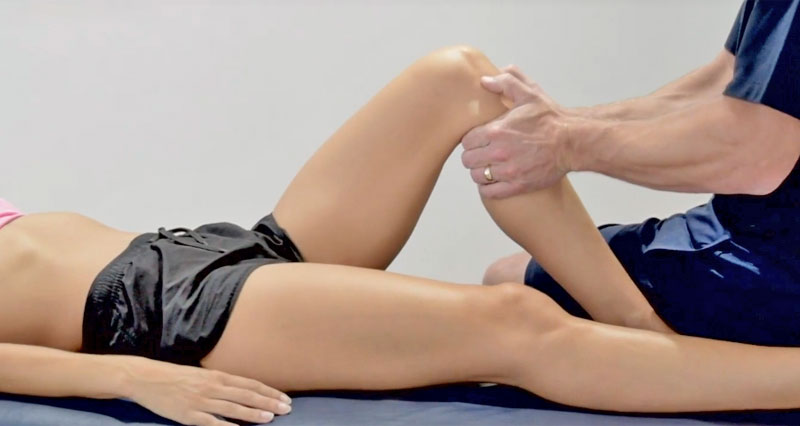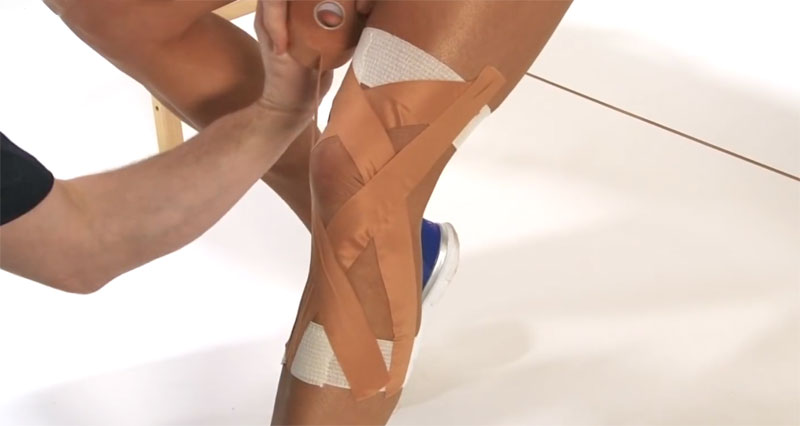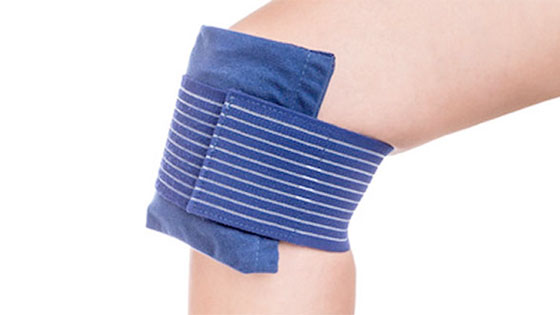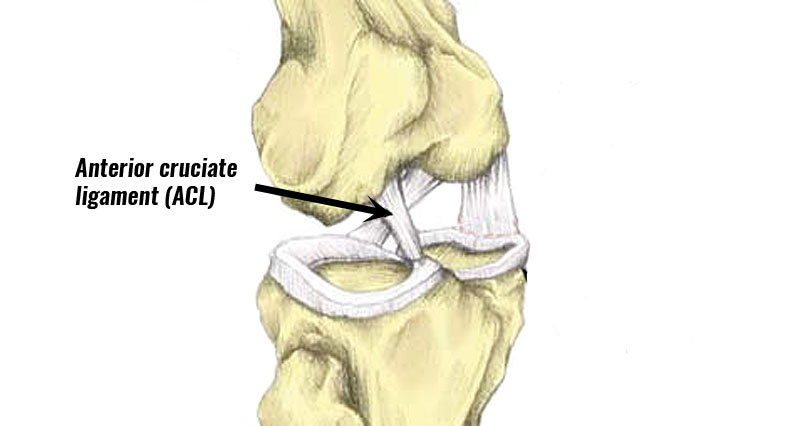Our ACL sprain rehab exercises have been created by elite level sports physiotherapist Phil Pask based on what he does with his professional sportsmen and women.
Each patient and injury will be different so always take the advice of your medical professional or surgeon. See Phil’s full ACL rehabilitation program for more detailed information on how each exercise fits in.
ACL mobility exercises
Knee mobility exercises can begin during the pre-operative phase of ACL rehabilitation if pain allows.
Mobility is most important after surgery and should begin as soon as possible within the first two weeks after surgery. Exercises should not be painful to perform.
Aim to work within the pain-free range of motion. We recommend seeking professional advice before attempting any anterior cruciate ligament rehabilitation exercises.
Knee flexion & extension
Following an anterior cruciate ligament injury, it is common for the patient to have difficulty straightening the leg.
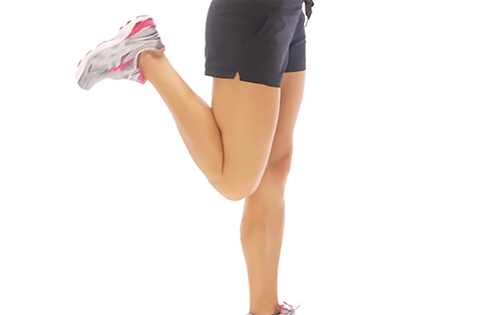
Teaching point:
- Gently bend and straighten the knee to keep it mobile and try to improve the range of motion
- You can do this in a sitting, standing, or lying, however, you are most comfortable
- Don’t push it into pain, only do what you can comfortably achieve
- Repeat 10 to 20 times
- Repeat the set 3 times a day until full mobility is restored
Heel slides
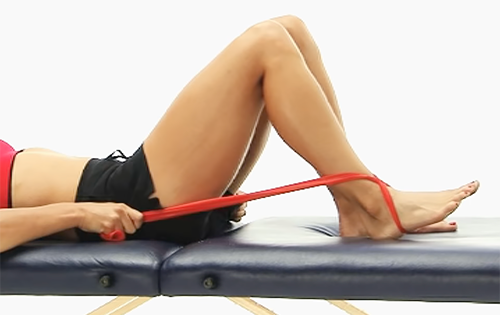
Teaching point:
- Lie on your back and bend the knee ensuring the foot stays in contact with the floor
- Repeat 10 to 20 times
- Slight discomfort may be felt but not pain
- This ACL exercise can also be done by using a towel or something similar to assist in pulling the leg in
Hamstring stretch
Hamstring stretches can be done in a number of ways either sitting, standing, or lying down.
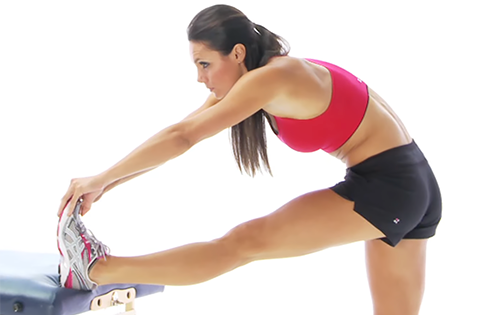
Teaching point:
- Gently take the leg to the limit of its comfortable range until a gentle stretch is felt at the back of the thigh
- Hold for 20 to 30 seconds and relax
Groin stretch
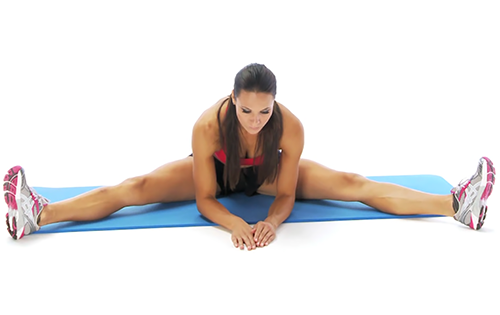
Teaching point:
- Stand, or sit with both legs out straight, as far apart as you comfortably can
- Lean forwards from the hips until you feel a gentle stretch in the groin area
- Hold for 20-30 seconds
ACL strengthening exercises
Strengthening exercises can also begin as soon as pain allows. The further you can get with strengthening exercises prior to surgery then the more likely you are to have a faster recovery post-operation.
Isometric quadriceps exercise
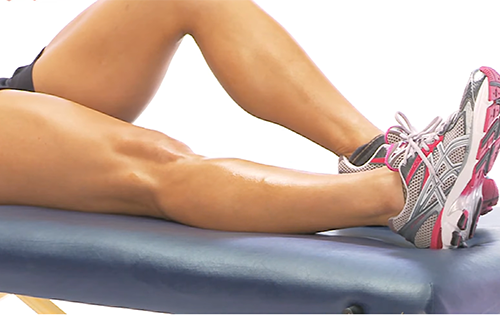
Teaching Points:
- Contract the quadriceps muscles and hold for 5 to 10 seconds
- Relax for about 3 seconds and repeat 10 to 20 times
- It is especially important you feel the vastus medialis muscle on the inside of the knee working when doing this exercise
- Place the fingers on the muscle towards the inside of the leg above the knee (vastus medialis oblique (VMO) muscle)
- It is important that this muscle is developed and this one should be felt contracting whilst performing the exercises
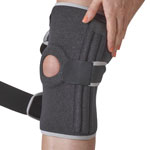
Buy Knee Braces
Isometric ACL exercises should be performed on a daily basis.
Static hamstring holds
This exercise targets the inner and outer hamstring muscles at varying angles of flexion or knee bend.
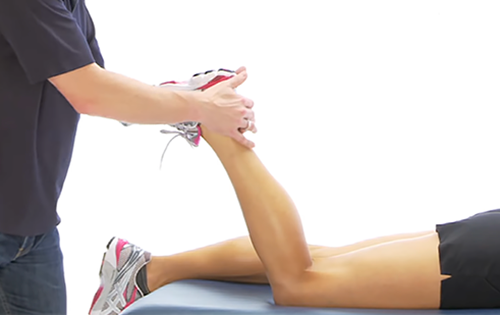
Teaching point:
- The athlete lies on their front in the prone position
- The partner or therapist provides resistance as the athlete contracts the hamstring muscles
- Hold for 3 or 4 seconds then relaxes
- The angle of knee flexion is changed and the exercise is repeated
- Once a range of angles has been worked the whole process is repeated with the foot first turned first inwards then outwards
Calf raises
This exercise will strengthen the calf muscles which consist of the gastrocnemius and soleus muscles.
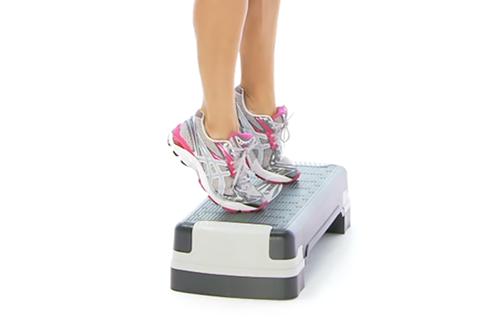
Teaching point:
- Rise up and down on the toes in a smooth movement
- You should be able to progress quite quickly with this one but aim for 3 sets of 10 and build up steadily, a few each day
It can be progressed later in the rehabilitation process by doing single-leg calf raises and then single-leg calf raises without holding onto anything.
You can also perform these on a step as shown in the video, allowing the heel to drop down past the level of the step.
Hip abduction
Use a section of resistance tubing, and attach it to something stable and around the ankle.
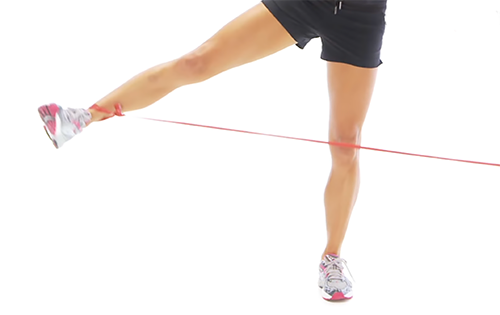
- Adduction – pull the leg across the body, keeping the knee straight
- Abduction, turn around (keeping the tubing on the same leg) and take the leg away from the body against a resistance, again keeping the knee straight(as shown).
Hip extension
This exercise works the buttock muscles and hamstrings.
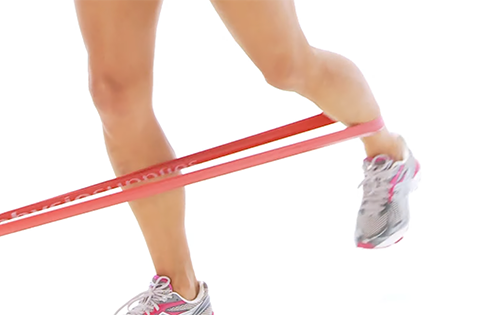
Teaching point:
- Stand with the band around one ankle and attached to a fixed point in front
- Use something to hold onto if you need to. Keeping the leg straight extend the hip as far as comfortable and return to the start position
- Keep the hips square on facing forwards and perform the exercise in a slow and controlled manner
- You should feel it working the buttock muscles
This can also be done without a band on all fours lifting the leg up behind.
Hamstring curls with band
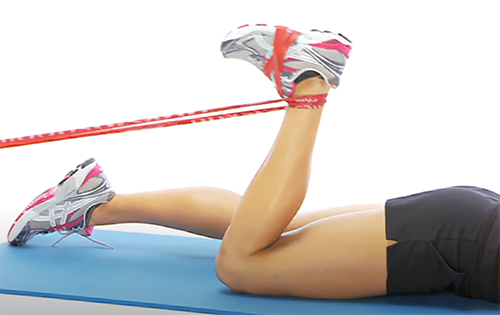
Teaching point:
- Lying on your front with the foot pointing down over the edge of the couch, the athlete fully bends the knee
- Provided this is pain-free, a resistance band or ankle weight can be used to increase the difficulty
Quarter squats
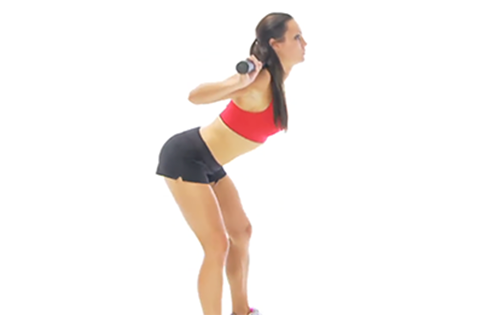
Teaching points:
- Squat down to about a quarter of the way down and return to the starting position
- Aim for 3 sets of 10 to 20 repetitions
Progress this by going down to halfway (Phase 3 of rehabilitation) and then full squats (to horizontal) in the sports-specific stages.
Increase the intensity by adding weight. Ensure stomach muscles are kept firm when performing squats.
Lunge
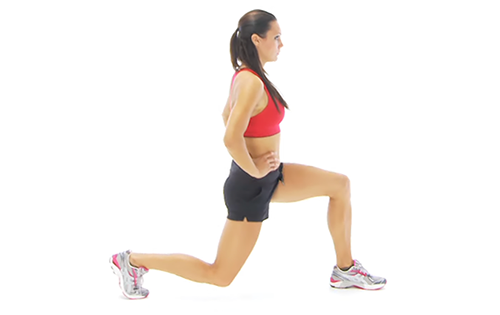
Teaching point:
- Standing one leg in front of the other as shown
- Bend the front leg to lean forwards and return to standing
- Aim for 3 sets of 10 to 20 repetitions
Increase intensity by adding weight. Ensure stomach muscles are kept firm when performing this exercise.
Leg press
- Position yourself on the seat with the feet hip-width apart on the platform In the starting position
- There should be approximately a 90-degree angle at the knee
- Adjust the seat accordingly
- Push with the legs to straighten the knees (either the seat will move backwards or the platform will move forwards)
- Do not lock the knees – leave a slight bend
- Slowly bend the knees back towards the starting position, although do not allow the weights in the stack to touch
- This maintains tension in the muscle
Step-ups
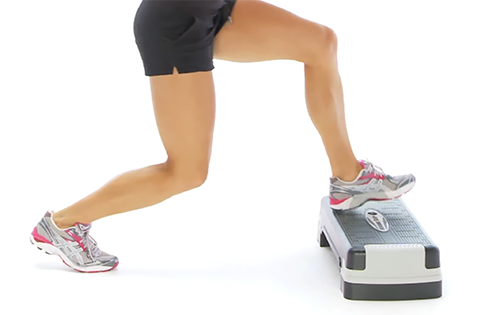
Teaching point:
- Step up and down on a bench about 9 inches high
- Up with the recovering leg and step down with the same leg
- Change round and do the same number of repetitions on the noninjured leg
Bridge exercises
The bridge exercise can be used for glute and hamstring strengthening after injuries to the hip or knee.
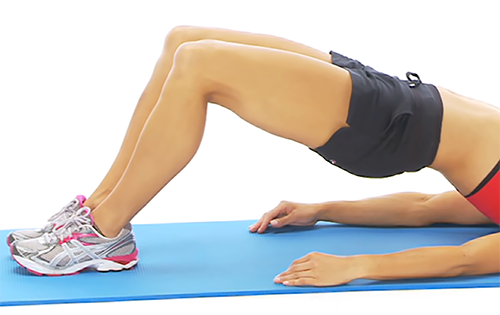
Teaching point:
- Lay on the floor on your back
- Bend your knees and place your feet flat on the floor, halfway towards your buttocks
- Lift the hips and thighs off the floor to form a straight line between your knees and shoulders
Proprioception exercises for ACL rehab
Proprioception is similar to balance but means the awareness of where your body (or body part) is in space. These ACL exercises help in controlling the movement of the limb and preventing re-injury.
Stork Balance
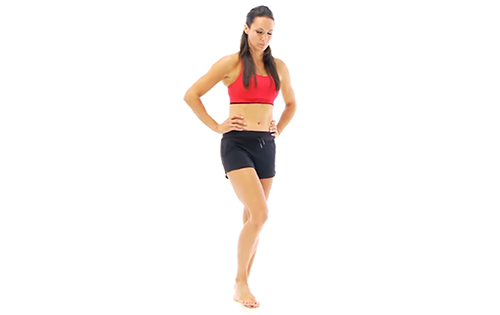
Teaching point:
- Begin by standing on your injured leg only for 30 seconds
- Once this is accomplished the athlete closes their eyes to increase the difficulty
- The next step is to balance on an unstable surface such as a trampette, wobble cushion, or half-foam roller
Other exercises included in our full ACL rehab protocol include Forward T, Forward T to Spiderman, Hop to stick, and many more.
Functional sports-specific and plyometric drills
Plyometric exercises involve dynamic and sometimes explosive movements. They bridge the gap between regaining normal strength in the leg and returning to full training and eventually competition.
Resistance band jump
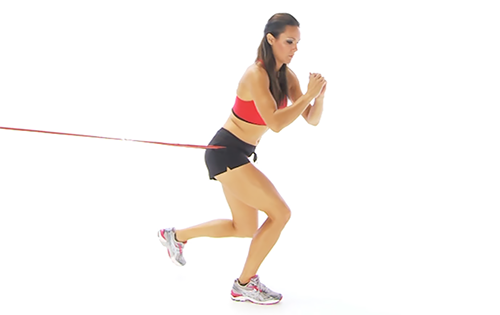
Teaching point:
- A resistance band is wrapped around the waist and anchored or held behind the athlete
- They then perform side-to-side or forwards and backward jumps
- The resistance from the band provides a challenge to the balance
The exercise can be made more difficult by increasing the thickness of the band or aiming to hop or jump further.
Hopping exercises
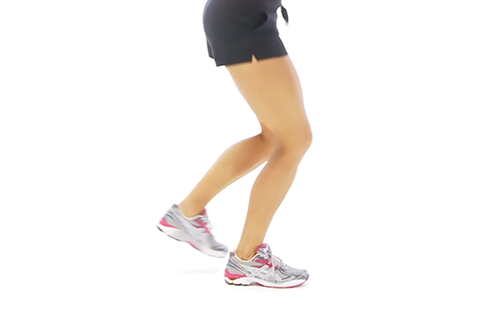
Many variations on hopping exercises are available. Start with a small hop on the spot and gradually increase the height jump. Try hopping to the front, to the side, and backwards.
Try hopping from one leg and landing on the other. Equipment such as hoops, agility ladders, and minimal hurdles can all be used to add further challenges.
Step back

Teaching point:
- Start standing on a small step
- Take one leg backwards, touch the foot on the floor and push off with the forefoot to move it back onto the step
- Alternate legs
- This can be increased in difficulty by performing on a higher step or at a faster speed
Box jumps
Numerous exercises can be created using a box or step to jump over.
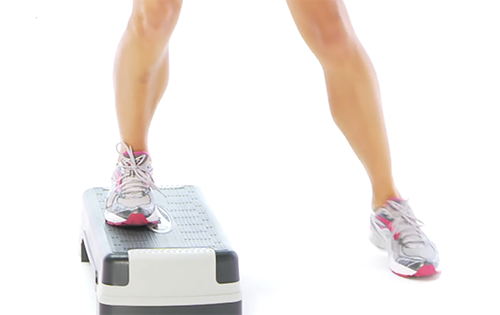
Teaching point:
- To start the athlete may jump sideways over the box, moving rapidly from one foot on one side, to the other foot on the other side
- This may also be performed front to back
- A further progression is high jumps over the box, firstly landing on two feet and progressing to one
Sports-specific drills
Practice drills that are used in training for your particular sport. Start off doing them slowly and under control. Gradually pick up the pace and competition level until you’re back to full training mode.
Here is an example of a sports-specific drill that involves reacting, accelerating, and changing direction.



